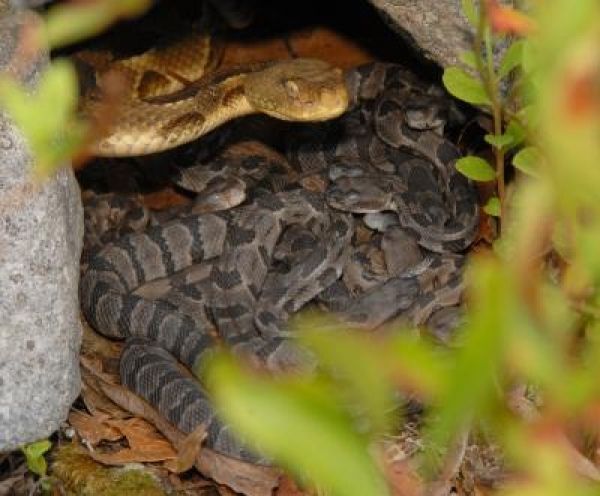Conservation efforts that open up the canopy of overgrown habitat for threatened timber rattlesnakes—whose venom is used in anticoagulants and other medical treatments—are beneficial to snakes but could come at a cost, according to a new study by researchers at Penn State and the University of Scranton. The researchers confirmed that breeding areas with more open canopies do provide more opportunities for these snakes to reach required body temperatures, but also have riskier predators like hawks and bobcats. The study, which appears in the June issue of the Journal of Herpetology, has important implications for how forest managers might open up snake habitat in the future.
Timber rattlesnakes are a species of conservation concern in Pennsylvania and are considered threatened or endangered in many of the northern states within their range. Like other ectothermic animals, snakes do not produce their own body heat and must move to warmer or cooler areas to regulate their temperature. Timber rattlesnakes typically use sunny, rocky forest clearings to breed, however many of these “gestation sites” are becoming overgrown with vegetation, blocking much-needed sunlight.
“Pregnant timber rattlesnakes typically maintain a temperature 6 to 8 degrees Celsius higher than normal so that their embryos can develop,” said Christopher Howey, assistant professor of biology at the University of Scranton and former postdoctoral researcher at Penn State. “If a gestation site doesn’t provide enough opportunities for snakes to reach that temperature, a snake might abort its litter, or babies might be born too small or later in the season, which reduces their chances of obtaining an essential first meal before hibernation. We wanted to understand if existing conservation efforts to open up the canopy in gestation sites actually do provide more thermal opportunities for snakes, as intended, and if these efforts impact predation risk.”
Read more at Penn State
Image Credit: Christopher Camacho


